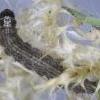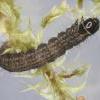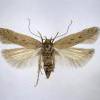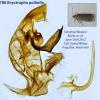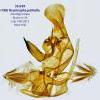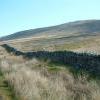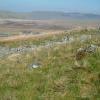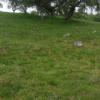35.039 Bryotropha politella (Stainton, 1851)
Status and Distribution
Local, occasionally locally common in Scotland (including the Northern and Western Isles) and upland parts of Wales and northern England. Very local to rare in central and southern England, Northern Ireland and Ireland. Not recorded in south-west England, the Channel Islands or Isle of Man. Confirmed records from southern English counties refer to single or, at most, a few reports mostly from chalk grassland sites. General distribution in the south has not infrequently been confused by misidentifications and this may still be the case in some areas.
Provisional map
Foodplant and Larval Feeding Signs
Rhytidiadelphus squarrosus (springy turf-moss), see distribution map, and grasses (possibly a Poa sp.).
Has been bred on one occasion from a larva found under a Schistidium sp. of moss, but it was not observed feeding (Ent. Gaz. Vol 54: 224-225 - Heckford, R. J. & Sterling, P. H., 2003).
Has been bred (without any signs of feeding or the larva or pupa) from collected Fomes fomentarius (tinder fungus), which seems a most unlikely pabulum.
Habitat
Dry, often herb rich, unimproved grassland in both acidic, including dry dune heathland, and calcareous areas. In northern England found to be locally common on a west-facing steep rocky slope with a good range of short lightly grazed herbaceous plants and extensive areas of Rhytidiadelphus squarrosus (springy turf-moss).
Finding the Moth
Can be readily disturbed in sunny, calm conditions in the evening and swept during the day. Comes to light.
Similar Species
Male Bryotropha politella have forewings with a plain glossy greyish-brown colour while females are glossy ochreous-grey, the termen (end of the wing) in both sexes is lined with blackish scales arranged singly or in small clusters. The smooth glossy forewing with a greyish tinge helps distinguish males from weakly marked B. desertella and B. terrella. In B. politella the fascia is absent or ill-defined, there is no conspicuous darkening (other than the terminal spots) towards the end of the wing and no lines in the hindwing cilia. Dissection is recommended if there is any doubt, particularly as B. terrella can be so variable in colouring.
Single brooded from June to early August.
Earliest: 25th May 2011 (VC8)
Latest: 16th August 1983 (VC3) plus a single confirmed record (by dissection) on 29th September 2011 (VC73)

